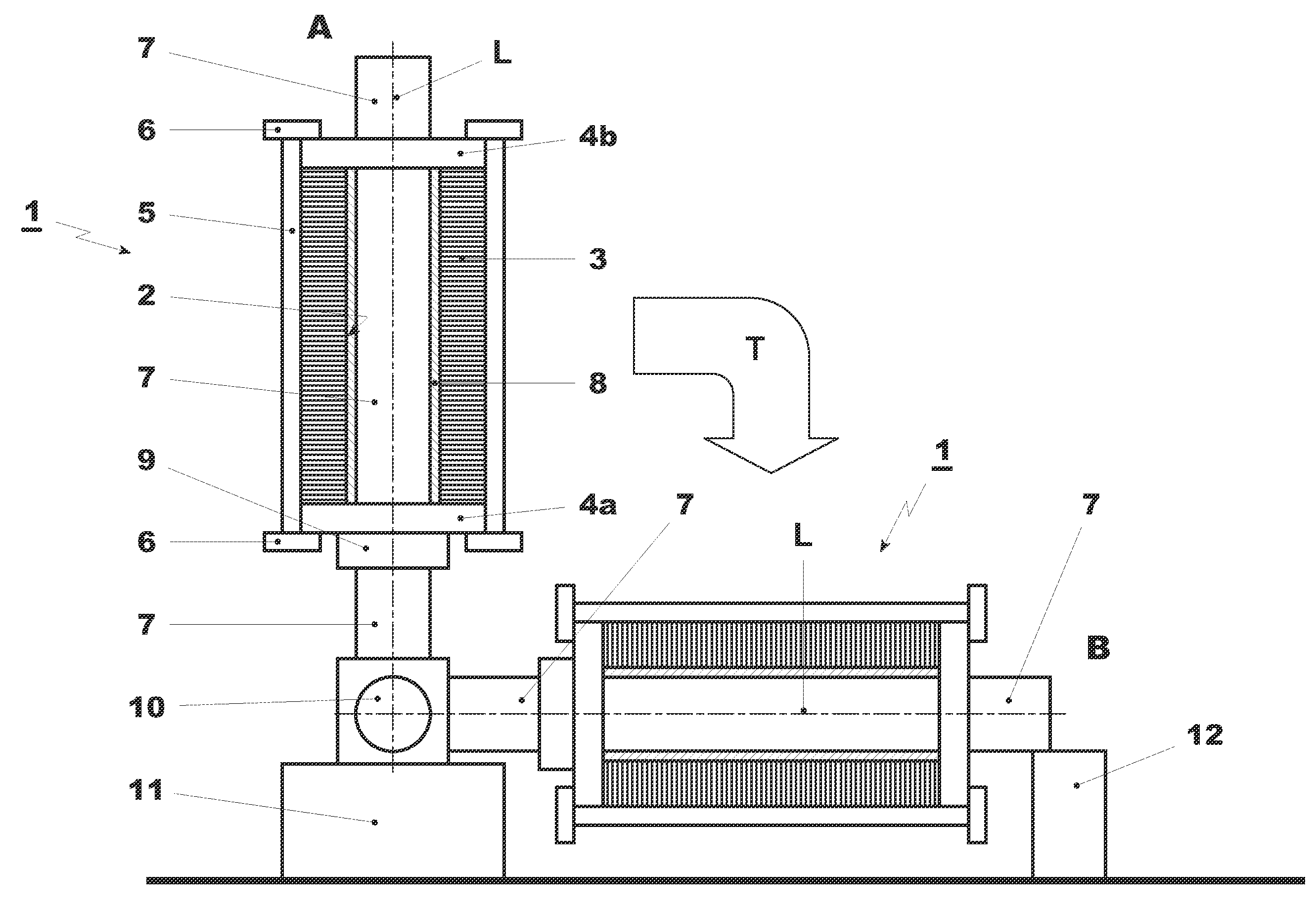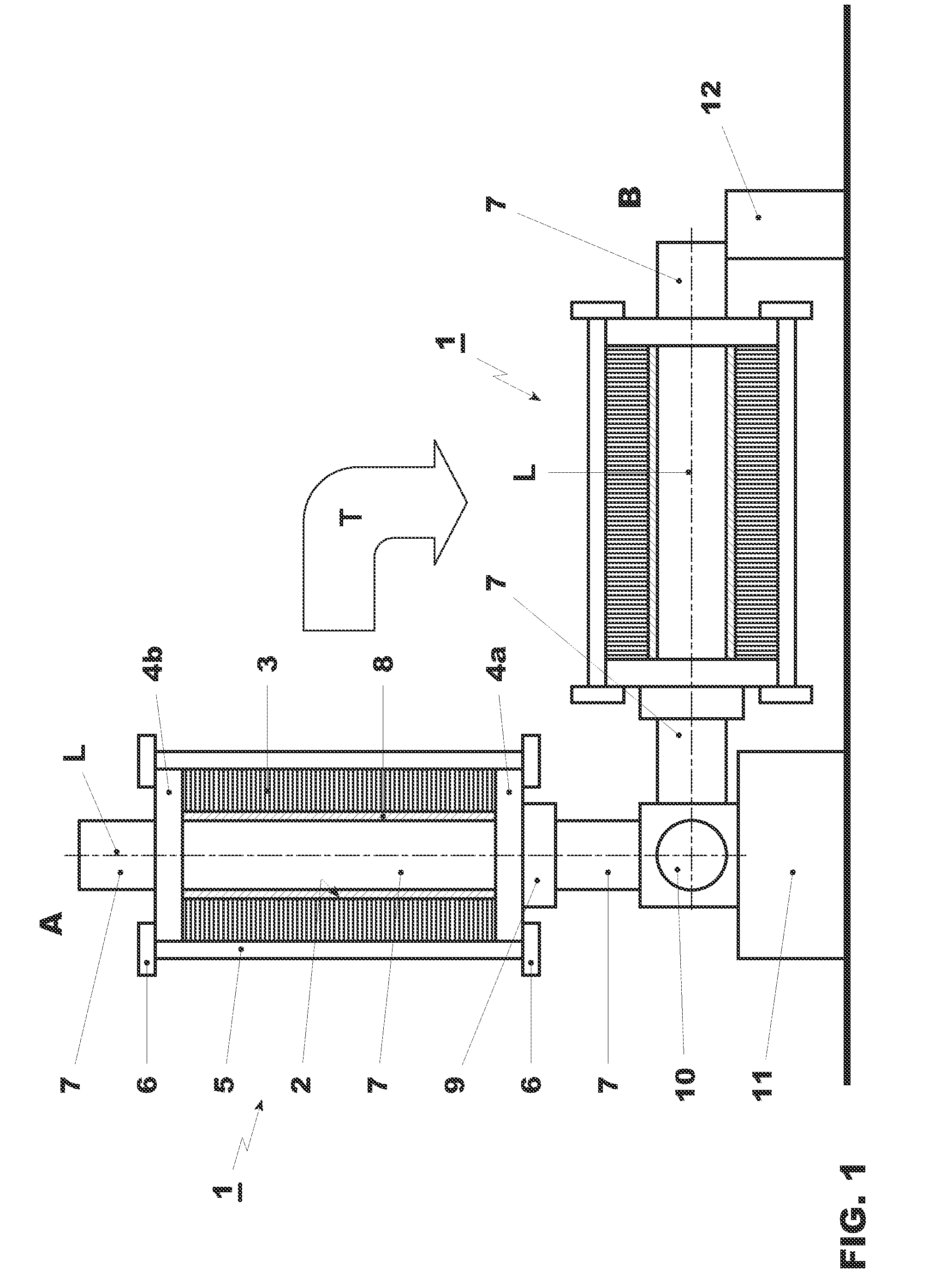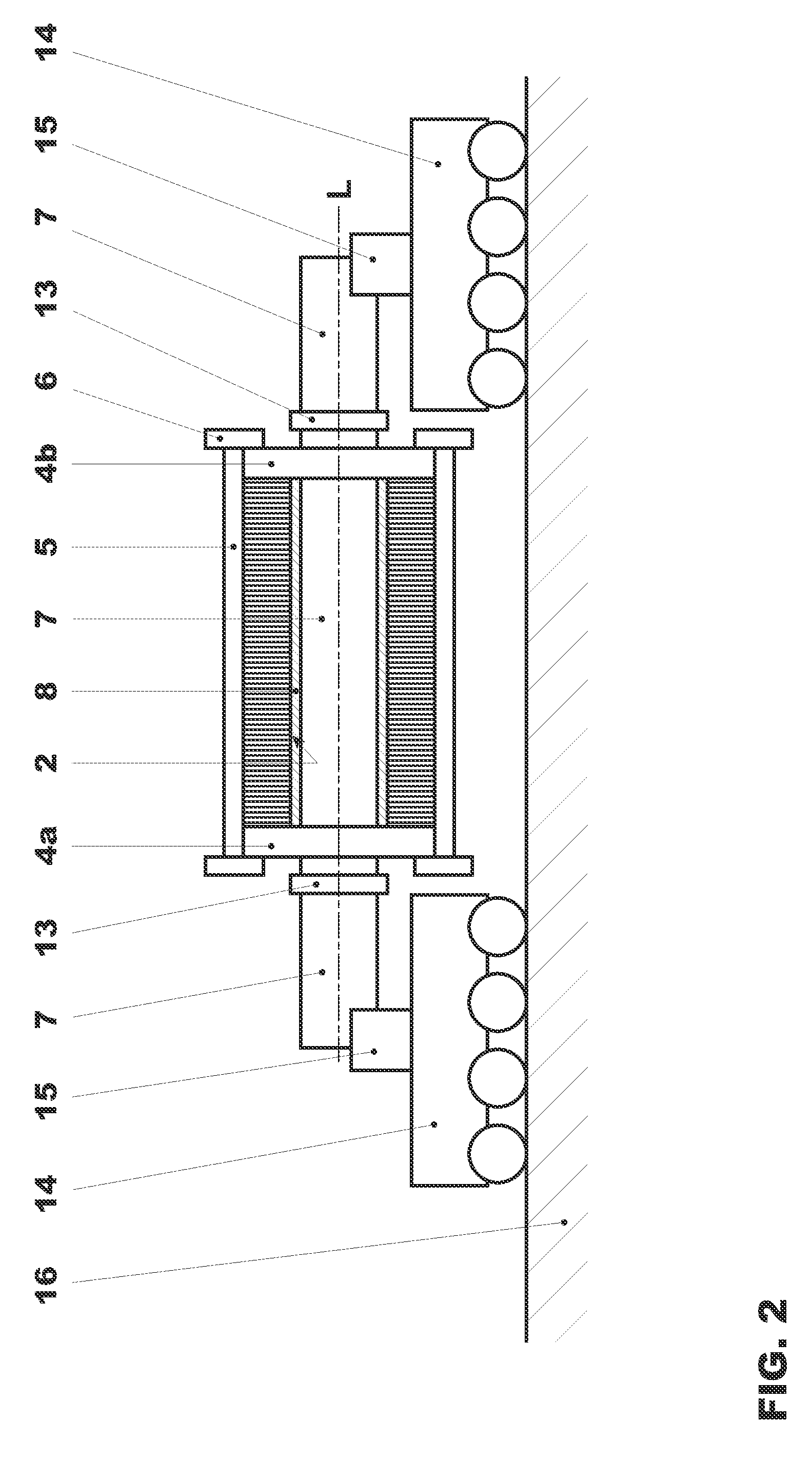Method for manufacturing and transport of a generator stator core
a technology of stator cores and manufacturing methods, which is applied in the manufacturing of stator/rotor bodies, magnetic bodies, magnetic circuit shapes/forms/construction, etc., can solve the problems of inability to manufacture stator cores of a limited diameter, and inability to meet the requirements of the power generation industry
- Summary
- Abstract
- Description
- Claims
- Application Information
AI Technical Summary
Benefits of technology
Problems solved by technology
Method used
Image
Examples
Embodiment Construction
[0034]Referring to the drawings, which are for the purpose of illustrating the present preferred embodiments of the invention and not for the purpose of limiting the same, FIG. 1 shows, on the left, a stator core 1 in vertical position A after stacking. On the right hand side, a stator core is shown in a horizontal position B following toppling T. In its horizontal position after stacking and toppling, the stator core 1 is ready for winding and / or handling and / or transport to a different location. The stator core 1 itself is shown as an axial cut, whereas the other elements are shown schematically.
[0035]A stator core 1, which has a central cylindrical bore 2, namely a through bore, generally comprises a stack of laminations 3. With respect to the stator core 1 of FIG. 1, the stacking step is performed vertically along a longitudinal axis A, which extends perpendicular to the plane of the ground 16.
[0036]According to the method depicted in FIG. 1, manufacturing of the stator core 1 b...
PUM
| Property | Measurement | Unit |
|---|---|---|
| weight | aaaaa | aaaaa |
| outer diameter | aaaaa | aaaaa |
| weight | aaaaa | aaaaa |
Abstract
Description
Claims
Application Information
 Login to View More
Login to View More - R&D
- Intellectual Property
- Life Sciences
- Materials
- Tech Scout
- Unparalleled Data Quality
- Higher Quality Content
- 60% Fewer Hallucinations
Browse by: Latest US Patents, China's latest patents, Technical Efficacy Thesaurus, Application Domain, Technology Topic, Popular Technical Reports.
© 2025 PatSnap. All rights reserved.Legal|Privacy policy|Modern Slavery Act Transparency Statement|Sitemap|About US| Contact US: help@patsnap.com



